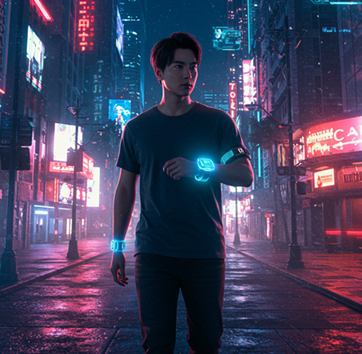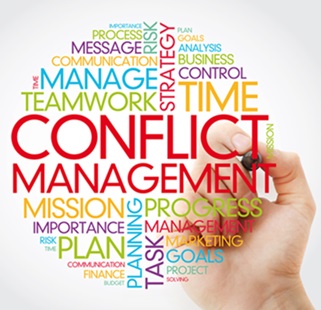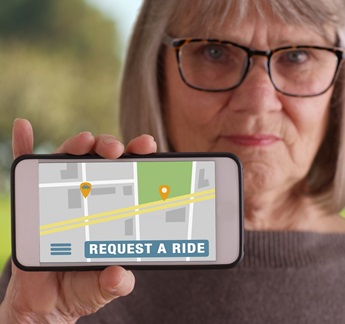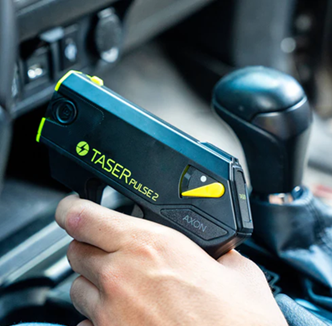How AI Can Help Reduce Crime and Improve Personal Safety
 Artificial Intelligence (AI) is rapidly transforming many areas of life, from healthcare and transportation to entertainment and finance. One of the most promising applications of AI is in the realm of public safety and crime prevention. As AI systems grow more sophisticated, they are increasingly being used to combat crime, enhance personal safety, and create safer communities.
Artificial Intelligence (AI) is rapidly transforming many areas of life, from healthcare and transportation to entertainment and finance. One of the most promising applications of AI is in the realm of public safety and crime prevention. As AI systems grow more sophisticated, they are increasingly being used to combat crime, enhance personal safety, and create safer communities.
In this blog post, we'll explore the ways AI is already making a difference in crime reduction, personal safety, and public security. We'll also discuss the future potential of AI in these areas, along with the challenges and ethical considerations that accompany its use.
1. AI in Crime Prevention: Predictive Policing
One of the most talked-about applications of AI in crime prevention is predictive policing. AI-driven algorithms analyze large datasets, including historical crime data, socio-economic information, weather patterns, and even social media activity, to predict where crimes are most likely to occur. This helps law enforcement agencies allocate resources more efficiently, focusing their efforts on areas with the highest likelihood of criminal activity.
For example, cities like Los Angeles and Chicago have piloted predictive policing programs that use AI to identify "hotspots" for certain types of crime, such as burglaries or gang-related activities. By deploying officers in these areas, police departments can deter crime before it happens.
However, while predictive policing shows promise, it also raises ethical concerns about privacy, bias, and over-policing of certain communities. AI systems are only as unbiased as the data they are trained on, and there is a risk of perpetuating existing racial and socio-economic inequalities. Therefore, it’s critical to monitor and refine these systems to ensure that they do not contribute to unfair practices.
2. Facial Recognition and Real-Time Surveillance
AI has also made a significant impact on the world of surveillance. Modern AI-powered facial recognition technology can quickly identify individuals in real time, allowing law enforcement agencies to track suspects or find missing persons. Airports, stadiums, and public venues are increasingly using AI-enhanced cameras to monitor crowds and flag suspicious activity.
In many cities, CCTV cameras are linked to AI systems capable of detecting abnormal behavior, such as someone loitering in a high-risk area or an unusual movement pattern that might indicate an imminent threat. These systems can send real-time alerts to law enforcement, enabling rapid responses to potential incidents.
For personal safety, facial recognition can be integrated into home security systems, enabling automatic identification of visitors and preventing unauthorized access. Some systems can detect facial expressions and assess whether someone appears to be in distress, further enhancing their ability to protect homeowners.
However, like predictive policing, AI-powered surveillance presents concerns about privacy. As cameras become more ubiquitous and AI systems become more powerful, there is a risk of creating a "surveillance state" where individuals are constantly monitored without their knowledge or consent. This highlights the importance of developing regulations to balance security with privacy.
3. Natural Language Processing (NLP) for Threat Detection
AI can help reduce crime and improve safety through Natural Language Processing (NLP), a subfield of AI that enables machines to understand and interpret human language. NLP is particularly useful in monitoring online platforms for dangerous content, such as violent threats, illegal activity, or cyberbullying.
Many tech companies already use AI-powered NLP tools to detect hate speech, harassment, and signs of potential violence on social media and other digital platforms. These tools can identify warning signs early, such as an individual expressing violent intentions, and alert authorities or platform moderators to intervene.
Additionally, NLP can be used in criminal investigations to analyze large volumes of written or spoken text, such as emails, phone calls, or social media posts, for signs of illegal activity. This can save investigators time and enable faster identification of suspects or criminal networks.
NLP is also employed in customer service for personal safety products. AI-powered chatbots can guide users through security issues, provide advice on self-defense tools, or even respond to emergency situations by contacting the appropriate authorities on behalf of the user.
4. AI in Cybersecurity
In the digital age, cybercrime has become a significant threat to personal and organizational safety. From identity theft and financial fraud to data breaches, cybercriminals are constantly evolving their tactics. Fortunately, AI is playing a key role in cybersecurity, helping to identify and mitigate threats before they cause harm.
AI-powered security systems can continuously monitor network traffic and user behavior, detecting anomalies that could indicate a cyberattack. Machine learning algorithms can quickly learn from past attacks, enabling them to recognize similar patterns in real-time and respond accordingly.
For individuals, AI-powered tools such as identity theft protection services and password managers help keep personal information safe online. These tools can flag suspicious activity, recommend stronger security measures, and even take action to secure accounts in the event of a breach.
Moreover, AI is essential in combating phishing attacks, which are a major threat to personal safety. By analyzing emails and other communications, AI systems can detect fraudulent attempts to steal sensitive information and block them before they reach the intended targets.
5. AI for Personal Safety Devices
AI is increasingly being integrated into personal safety devices, making them more effective and intuitive. For example, wearable devices such as smartwatches can use AI to detect when the wearer is in distress, such as during a fall, a medical emergency, or an attack. These devices can automatically send alerts to emergency services, providing real-time location data and other critical information.
AI-driven apps for personal safety also use geolocation and behavior analysis to protect users. Some apps can detect if the user is traveling through a high-crime area or deviating from a typical route and send an alert to a trusted contact or local authorities.
In the realm of home security, AI-powered systems can learn from the user’s behavior to distinguish between regular activity and suspicious events. For example, these systems can differentiate between family members entering the home and an intruder, reducing the number of false alarms and enhancing overall safety.
6. AI and Autonomous Vehicles: Enhancing Safety on the Roads
AI has the potential to dramatically improve road safety by powering autonomous vehicles. Self-driving cars use AI to analyze traffic patterns, detect obstacles, and make real-time decisions to avoid accidents. These vehicles are equipped with sensors, cameras, and machine learning algorithms that can predict and prevent crashes, ultimately reducing the number of traffic-related deaths and injuries.
In addition to improving public safety, AI in autonomous vehicles can enhance personal security by minimizing the risks associated with human error, such as distracted driving or driving under the influence of alcohol or drugs. As autonomous technology continues to evolve, it has the potential to make roads much safer for everyone.
7. The Future of AI in Crime Prevention and Personal Safety
AI’s role in reducing crime and enhancing personal safety is still evolving, and the future holds even greater potential. As AI technology becomes more advanced, it will be able to predict and prevent crimes with even greater accuracy, provide more intuitive personal safety tools, and create smarter, safer communities.
However, with this potential comes responsibility. As AI systems become more integrated into law enforcement and personal safety tools, it is crucial to address issues of bias, privacy, and accountability. Ensuring that AI is used ethically and transparently will be key to maximizing its benefits while minimizing potential harm.
Conclusion
AI has already demonstrated its power to reduce crime and improve personal safety in a variety of ways. From predictive policing and facial recognition to cybersecurity and personal safety devices, AI is transforming the way we approach public safety. While challenges remain, the continued development of AI promises to create safer communities and provide individuals with more effective tools to protect themselves from harm.
Company Info
Customer Service
Product Information
- TASER® and Stun Devices Regulations by State
- TASER® Safe Escape Product Replacement Guarantee
- TASER® Comparison Chart
- TASER® User Manuals
- TASER® Warranty Info
- Byrna Product Catalog
- PepperBall Manuals & Spec Sheets
- Pepper Spray Laws
- Air Gun Laws
- States that Restrict Automatic and Butterfly Knives
- Our Print Catalog



































































